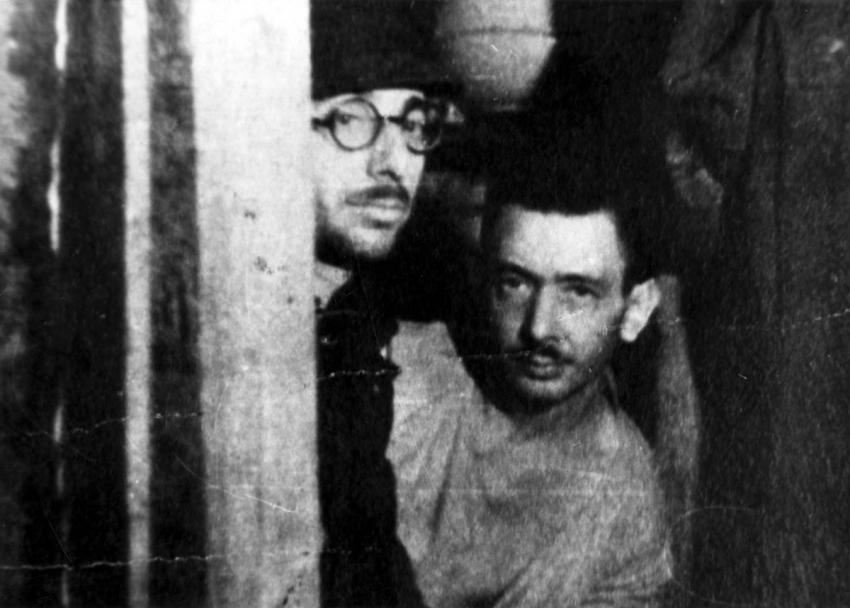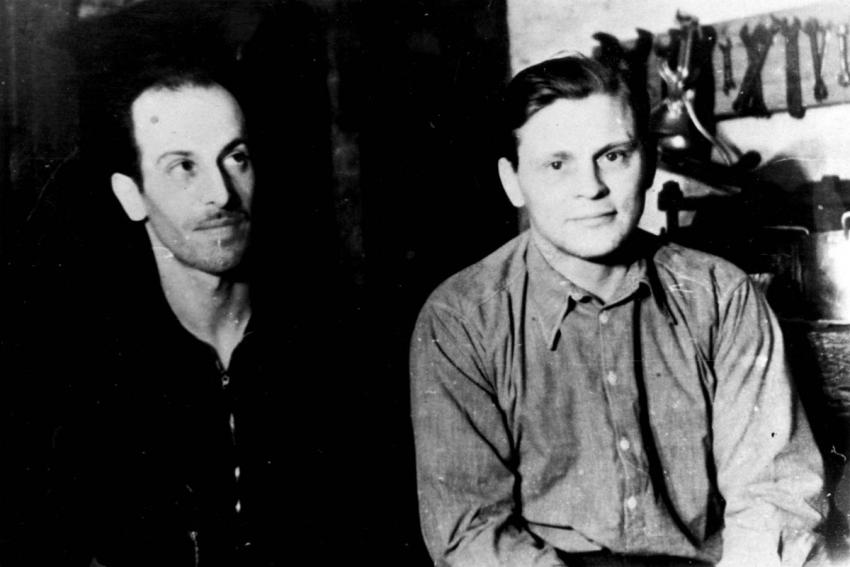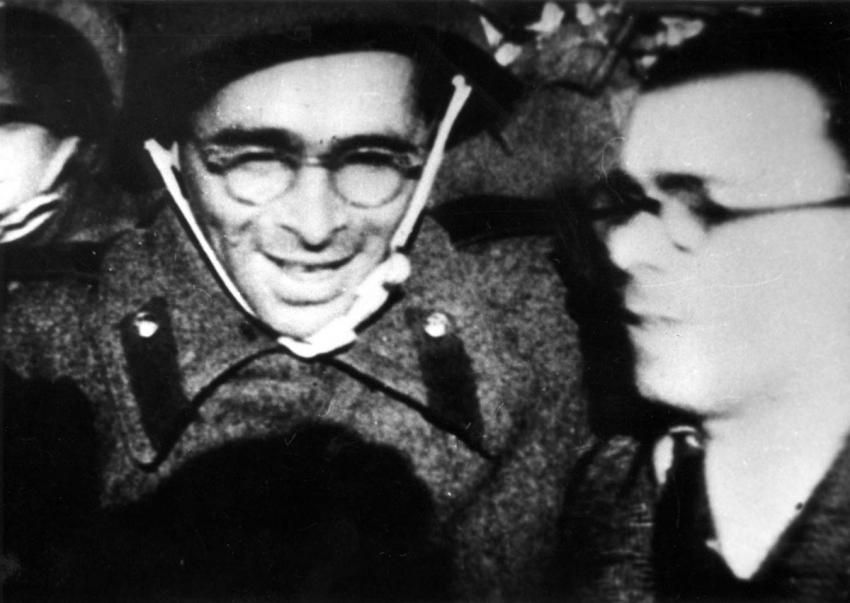The ghetto was subordinate to the local headquarters of the SiPo (Sicherheitspolizei, the German security police), with 12-15 Latvians placed on guard around its perimeter. During its existence, dozens of Jews attempting to smuggle goods into the ghetto were murdered by German police.
The local Jewish council (Aeltestenrat) was established in Liepāja approximately six months before the ghetto. At its head was Solomon Israelit, a merchant and public activist. An employment office was opened in the ghetto, alongside a food distribution center, factories and workshops. The elderly and those unable to work looked after the few children in the ghetto. There was even a small library, drama circle and "Minyan" (prayer quorum). One of the houses had an underground radio. Jewish laborers refurbished apartments in the ghetto, and regulatory services enforced edicts to maintain cleanliness. As a result, starvation in the ghetto was reduced, although malnutrition did not disappear completely. The "Linat Tzedek" hospital helped the residents, providing sick permits to the laborers and carrying out abortions, due to the prohibition on pregnancies in the ghetto.
Most of the ghetto residents labored in German workshops outside the ghetto: seamstresses, shoemakers, carpenters and garage mechanics among others. Some worked in army and police warehouses, where wood, clothes, booty from the war and other items were stored. Others were sent to work in civil factories and additional places of work. In October 1942, 160 Jews originally from Latvia, Lithuania and Germany were brought from the Riga ghetto to work in the sugar factory in Liepāja. They were housed separately from the other residents, and were forbidden from making contact with them, but this restriction was later lifted. They received food from the Jews of the ghetto, and smuggled in sugar from the factory, thus contributing to the nourishment of all the ghetto residents. Some were caught and executed. In December, most of them were returned to Riga, although some 50 of them went to work at the Liepāja port. Three of these were allowed by the Germans to return to Riga, using the opportunity to ferry notes and other information between the ghettos. In March 1943, all of the Riga group was returned to the Riga ghetto.
The Annihilation of the Liepāja Jewish Community
At the end of 1943, the German officer in charge of the Liepāja ghetto, Franz Kerscher, informed the Jewish leadership of the impending liquidation of the ghetto and the transfer of its residents to a concentration camp. The Jews were ordered to take their belongings with them. From previous experience, the Jews surmised that they were all to be murdered. Some committed suicide using poison. Other gave their possessions to Latvian acquaintances, in the hope of retrieving them after the war. A few young Jews planned to set the ghetto on fire and resist the deportation. Kerscher suggested that the Jews be found places to live in Liepāja, in order to prevent their deportation to the concentration camps, but his proposal was rejected.
On Friday 8 October 1943, Yom Kippur eve, at 4 AM, the Jews were ordered to gather in the ghetto courtyard and turn over all of their money and valuables. They were taken by train to the Kaiserwald concentration camp, close to Riga. The following day, all the Jews found unfit for labor – mothers and their children, the infirm and the elderly, in all about half of the surviving Jews from the Liepāja ghetto – were sent to the Riga ghetto. With the liquidation of that ghetto, less than a month later, they were deported to the Auschwitz extermination camp. Of the approximately 50 forced laborers remaining in Liepāja, some escaped; three hid with Latvians; and the remainder were brought to Kaiserwald in May 1944. Liepāja was then declared "Judenrein" (Jew-free).
With the entrance of the Red Army to Liepāja and its liberation on 9 May 1945, approximately 20 Jews were found in the city. Some of them had fled and survived, some had found shelter with Latvian acquaintances, some had acquired forged Christian identification papers, and 11 Jews had hidden in a basement in the area of the ghetto on the night before its liquidation. They had remained there for a year-and-a-half, until liberation, with the help of Righteous Among the Nations Robert Seduls and his wife Johanna.
After liberation, the few hundred Jews from Liepāja who had been in concentration camps and the Soviet Union during the war returned to the city. They left Liepāja soon after. According to the most recent data, there are a few hundred Jews living in Liepāja today – Holocaust survivors, their descendants and immigrants from the FSU.













